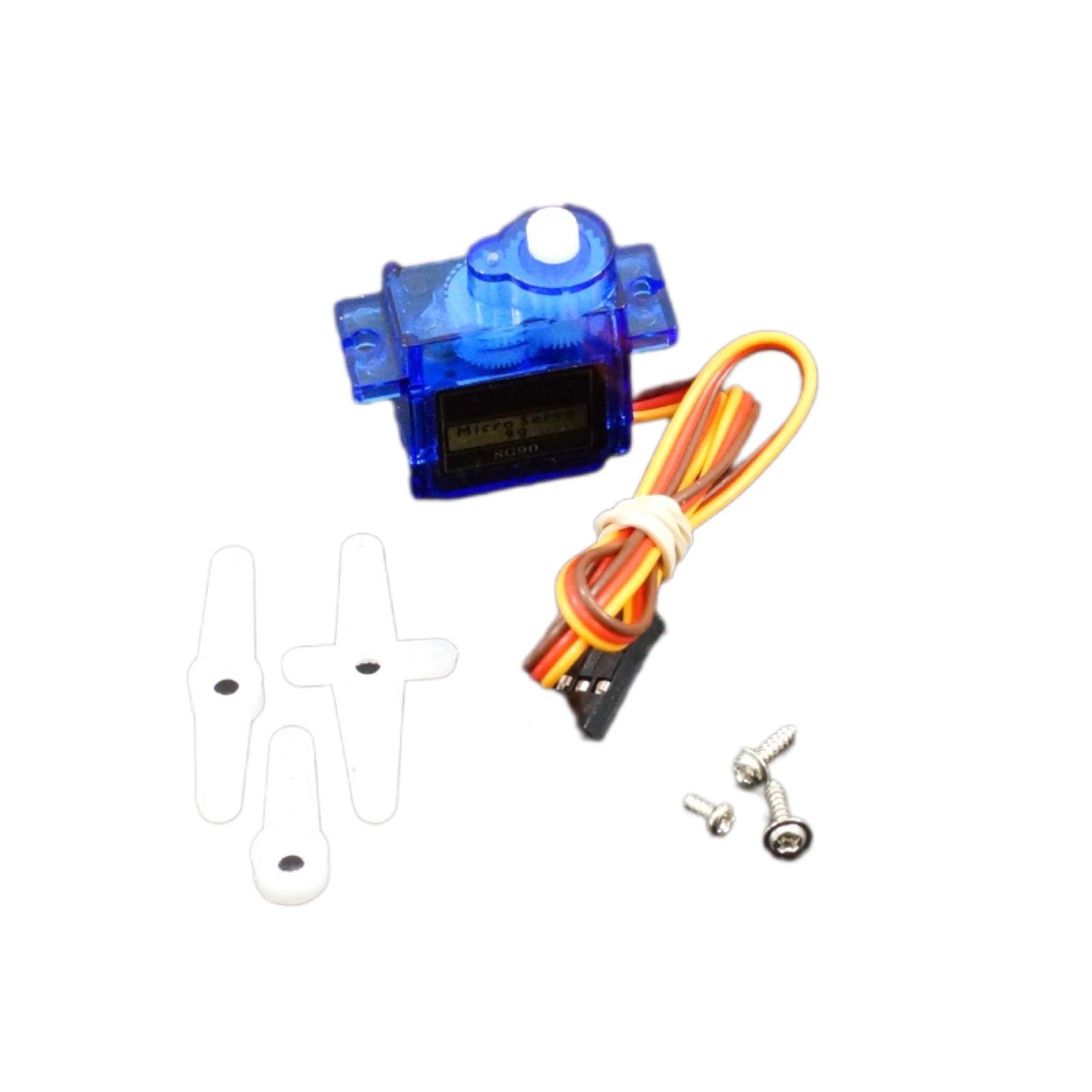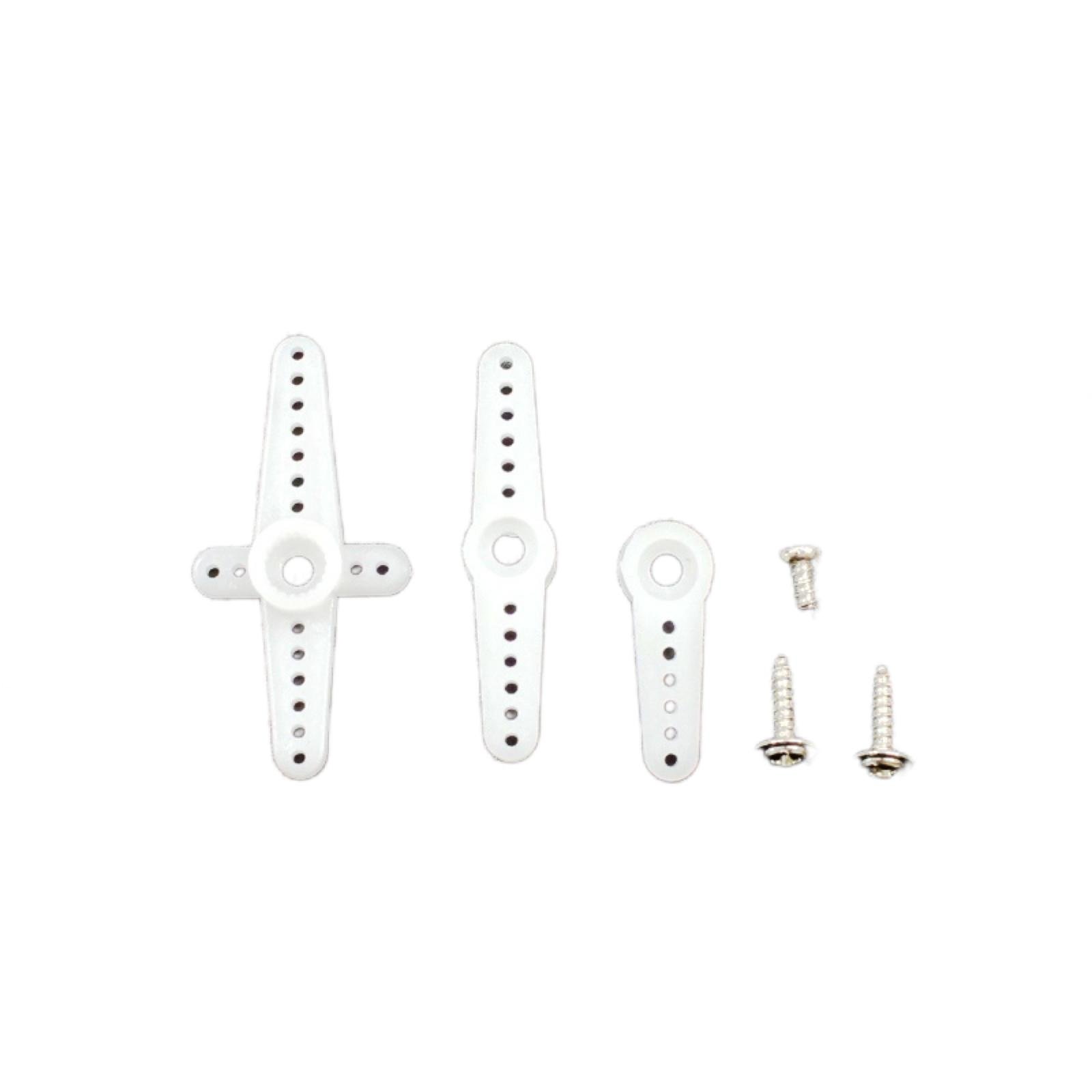PACKAGE INCLUDES:
- 1 SG90 Servo motor with attached 9.5″ control cable
- 3 arms/horns for various interface applications
- Screws for mounting arms to the servo and mounting the servo
KEY FEATURES OF SERVO MOTOR MICRO SG90:
- Very small micro size
- Can lift 3.75lb positioned 1cm from center of shaft
- 180 degree rotation
- Analog drive
- Low cost
The Servo Motor Micro SG90 work well for basic servo experimentation and can be used in applications where small size is a virtue and that don’t require a huge amount of torque, but they are still pretty strong. Gears are nylon which is the case with most lower cost Servos.
Servo motors can be commanded to go to a specific position and so are the usual go-to motor when accurate positioning is needed, such as for turning the front wheels on an RC model for steering or pivoting a sensor to look around on a robotic vehicle.
Servo motors are comprised of a DC motor, gears, a potentiometer to determine its position and a small electronic control board.
Standard servos have a specified limited range. This is usually specified as 180 degrees. Frequently the actual range is less than the full 180 degrees and is limited by the mechanical gears and potentiometer used for position sensing that is contained in the device. If the motor is run all the way to 0 or 180, it may start making unhappy sounds and start vibrating as it tries to drive to a position that it cannot get to. This causes a high stall current condition and has the potential of stripping gears and damaging the motor, so it is best to either drive it to a safely reduced range such as 20-160 or experiment a bit to determine the actual usable range if you want to maximize the range.
Servos expect to see a pulse on their PWM pin every 20 mSec. The pulse is active HIGH and the width of the pulse determines the position (angle) of the servos shaft. The pulse can vary between 1mSec and 2mSec. A 1mSec pulse positions the shaft at 0 degrees. A 1.5mSec pulse positions the shaft at 90 degrees (centered in its range). A 2 mSec pulse positions the shaft at 180 degrees. Pulses with values between these can be used to position the shaft arbitrarily







